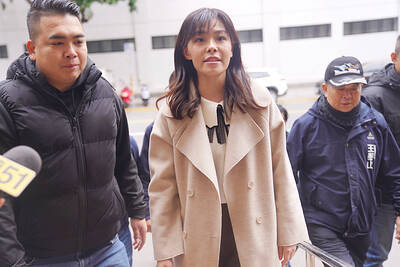Japan yesterday approved the resumption of nuclear power operations at two reactors despite mass public opposition, the first to come back on line after they were all shut down following last year’s Fukushima Dai-ichi nuclear crisis.
Japanese Prime Minister Yoshihiko Noda, his popularity ratings sagging, had backed the restarts for some time. He announced the government’s decision at a meeting with key ministers, giving the go-ahead to two reactors operated by Kansai Electric Power Co at Ohi in western Japan.
The decision could open the door to more restarts among Japan’s 50 nuclear power reactors.
“There is no such thing as a perfect score when it comes to disaster prevention steps,” Japanese Trade Minister Yukio Edano told a news -conference after the announcement.
“But, based on what we learned from the Fukushima accident, those measures that need to be taken urgently have been addressed, and the level of safety has been considerably enhanced [at the Ohi plant],” he said.
Edano, who holds the energy portfolio, said the government policy to reduce Japan’s dependence on nuclear energy in the medium to long-term was unchanged despite the decision.
The decision is a victory for Japan’s still-powerful nuclear industry and reflects Noda’s concerns about damage to the economy if atomic energy is abandoned following the world’s worst nuclear disaster since Chernobyl.
The push to restart the two Ohi reactors, before a potential summer power crunch, also underscores the premier’s eagerness to win backing from businesses worried about high electricity costs that could push factories offshore. Kansai electric says it will take six weeks to get both reactors running fully.
However, the decision risks a backlash from a public deeply concerned about nuclear safety. As many as 10,000 demonstrators gathered outside Noda’s office on Friday night amid a heavy police presence to denounce the restarts, urging the premier to step down and shouting: “Lives matter more than the economy.”
Nuclear power supplied almost 30 percent of electricity needs before the disaster in March last year, which triggered meltdowns at the Fukushima Dai-ichi plant, spewing radiation and forcing mass evacuations.
All 50 reactors were shut down for maintenance or safety checks in the months since the accident. The government had placed a priority on gaining the approval of local communities for the Ohi restarts to avert July-August power shortages.
Critics say the government was too hasty in signing off on the restarts, especially given delays in setting up a new, more independent nuclear regulatory agency.
Public trust in regulators was damaged by evidence that cozy ties with utilities were a key reason Fukushima operator Tokyo Electric Power Co was unprepared for the tsunami, and subsequent signs that relations remain far too snug.
Parliament’s lower house on Friday approved legislation to create a new atomic regulator, but getting it up and running will take months. That could force the government to go slower on restarts, though some politicians are keen to forge ahead.

The US government has signed defense cooperation agreements with Japan and the Philippines to boost the deterrence capabilities of countries in the first island chain, a report by the National Security Bureau (NSB) showed. The main countries on the first island chain include the two nations and Taiwan. The bureau is to present the report at a meeting of the legislature’s Foreign Affairs and National Defense Committee tomorrow. The US military has deployed Typhon missile systems to Japan’s Yamaguchi Prefecture and Zambales province in the Philippines during their joint military exercises. It has also installed NMESIS anti-ship systems in Japan’s Okinawa

‘WIN-WIN’: The Philippines, and central and eastern European countries are important potential drone cooperation partners, Minister of Foreign Affairs Lin Chia-lung said Minister of Foreign Affairs Lin Chia-lung (林佳龍) in an interview published yesterday confirmed that there are joint ventures between Taiwan and Poland in the drone industry. Lin made the remark in an exclusive interview with the Chinese-language Liberty Times (the Taipei Times’ sister paper). The government-backed Taiwan Excellence Drone International Business Opportunities Alliance and the Polish Chamber of Unmanned Systems on Wednesday last week signed a memorandum of understanding in Poland to develop a “non-China” supply chain for drones and work together on key technologies. Asked if Taiwan prioritized Poland among central and eastern European countries in drone collaboration, Lin

ON ALERT: Taiwan’s partners would issue warnings if China attempted to use Interpol to target Taiwanese, and the global body has mechanisms to prevent it, an official said China has stationed two to four people specializing in Taiwan affairs at its embassies in several democratic countries to monitor and harass Taiwanese, actions that the host nations would not tolerate, National Security Bureau (NSB) Director-General Tsai Ming-yen (蔡明彥) said yesterday. Tsai made the comments at a meeting of the legislature’s Foreign Affairs and National Defense Committee, which asked him and Minister of National Defense Wellington Koo (顧立雄) to report on potential conflicts in the Taiwan Strait and military preparedness. Democratic Progressive Party (DPP) Legislator Michelle Lin (林楚茵) expressed concern that Beijing has posted personnel from China’s Taiwan Affairs Office to its

BACK TO WORK? Prosecutors said they are considering filing an appeal, while the Hsinchu City Government said it has applied for Ann Kao’s reinstatement as mayor The High Court yesterday found suspended Hsinchu mayor Ann Kao (高虹安) not guilty of embezzling assistant fees, reducing her sentence to six months in prison commutable to a fine from seven years and four months. The verdict acquitted Kao of the corruption charge, but found her guilty of causing a public official to commit document forgery. The High Prosecutors’ Office said it is reviewing the ruling and considering whether to file an appeal. The Taipei District Court in July last year sentenced Kao to seven years and four months in prison, along with a four-year deprivation of civil rights, for contravening the Anti-Corruption